With the new Ring Video Doorbell 3 released, a lot of Ring 2 users are wondering if the new version is worth the upgrade. In this article we will examine both the Ring 2 and the Ring 3. I will even touch on the Ring 3 Plus if you are still undecided.
By the end of this Ring Video Doorbell review, you will have a better understanding of the upgrade worthiness of the Ring 3, and for new owners, you will know which model is better suited for your specific needs. Read on to find out if the Ring Video Doorbell 3 is worth all the fuss, or if you should stick with the Ring 2.
Contents
Differences between Ring Video Doorbell 2 and 3
There are several differences between the two models. Most of them are a result of the upgrades to the Ring 3. Take a look at where the two models are different.
- Power supply. The Ring 3 is a wireless, battery operated doorbell. The Ring 2 can run on batteries or be hardwired into your existing doorbell system.
- Dual-band WiFi. The Ring 2 will only connect to the 2.4g WiFi band, while the Ring 3 will connect to either the 2.4 or 5g networks.
- Motion zones. Ring 2 uses standard PIR motion zones for detection and alerts. The Ring 3, however, uses advanced motion zone detection along with adjustable zone alerts.
- Live view. The ring 3 will enable live view streaming of the video feed, even running on batteries, the Ring 2 has an optional live view of the feed but must be hardwired to enable it.
- Silent mode. Ring 2 doesn’t offer silent mode capabilities. However, the Ring video doorbell 3 can use silent mode for chimes, alerts and notifications.
Similarities between Ring Doorbell 2 and Ring Doorbell 3
Aside from a few small details like the actual size dimensions and faceplate color options, the two video doorbells are otherwise identical from the list above. Here are some of the more critical factors they share in common.
- No PoE. Neither of these Ring doorbells offer you Power over Ethernet connectivity. You will need the Ring Elite for that option.
- Ring app. Both the Ring video doorbell 2 and the Ring 3 use the same Ring mobile app for set up, functionality and control.
- Two-way communication. You will be able to see, hear and talk to anyone at your front door with the built-in speakers and microphones of the two doorbells.
- Video resolution. Each of the two doorbell models in this Ring review record and save in full 1080p HD resolution.
- Color night vision. Both the Ring 2 and Ring 3 use full-color infrared night vision.
- Operational temperatures. You can safely use the Ring 3 or Ring 2 in almost any temperature between -5 and 120 degrees Fahrenheit.
- Ring Protect. Both doorbells make use of the various Ring Protect subscription plans and warranties.
Comparison Chart
Here we offer you a side by side comparison of the Ring 3 and Ring 2 doorbell features and options. Find the model that offers you what you need.
| Ring Doorbell 3 | Ring Doorbell 2 | |
| Dimensions | 4.8×2.75×2.17 inches | 5.1×2.5×1.08 inches |
| PoE | No | No |
| Power Supply | Rechargeable Battery Pack | Battery or Hardwired |
| Mobile App | Yes | Yes |
| WiFi Connection | 2.4g & 5g | 2.4g |
| Two-Way Communication | Yes | Yes |
| Video Resolution | 1080p HD | 1080p HD |
| Field of View | 160 Degrees x 90 degrees | 160 Degrees x 90 Degrees |
| Motion Zones | Programmable | Standard PIR |
| Ring Pre-Roll | No | No |
| Live View | Yes | Hardwired Only |
| Silent Mode | Yes | No |
| Dual Power Option | Optional | Yes |
| Night Vision | Color | Color |
| Faceplate Colors | 2 included | 2 included |
| Operation Temperatures | -5 to 120 degrees (F) | -5 to 120 degrees (F) |
| Warranty | 1 year parts, Lifetime theft replacement | 1 year parts, Lifetime theft replacement |
| Price | Check on Amazon | Check on Amazon |
Comparing the Ring Video Doorbell 2 Vs. Ring 3
Not we get into the juicy details. Below we will look at the most requested features and items of the two doorbells and compare them apples to apples to find out which one has the upper hand. It isn’t always as cut and dry as you might imagine, so read on to find out which Ring video doorbell is the best.
Installation and Power Options
Both Ring doorbells here offer you the ability to use batteries. This enables you to mount the doorbell in the best possible location, even on the door itself, if needed. Both will come with wedge and corner mounting adapters to help you get the right angle as well.
However, out of the box, the Ring 2 also allows you to wire in to your existing doorbell and not have to rely on battery power. The downside here, is that if you wish to have on-demand viewing of the live feed, the Ring 2 must be hardwired in. The live view is not an option when the Ring 2 runs on battery power.
The Ring 3, though, has been upgraded and can run live view on battery power without a significant loss in battery life. This upgrade was the main focus of Amazon’s mission when creating the Ring 3 and it works well.
The Installation for Both Models is the Same
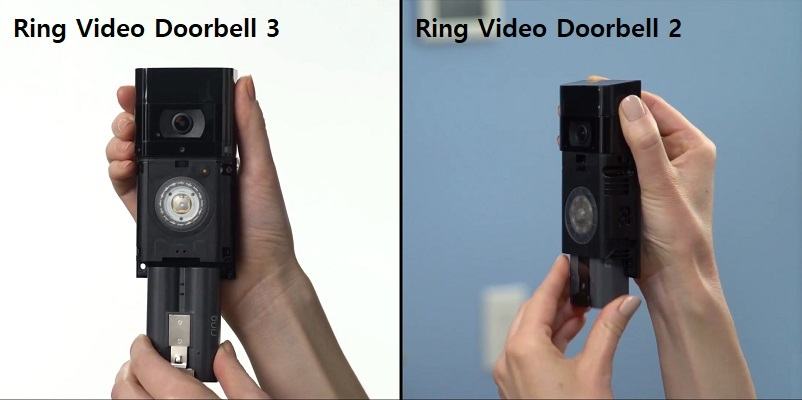
When you choose to install the Ring 2 with the battery power option, the installation of both models will take you less than 15 minutes on average. Once you insert the battery it will power on and go through a start up cycle.
During this time you should download, install and open the Ring app. The step by step instructions in the app will find your WiFi network, connect to it and then find your doorbell. Once synced you are ready to mount the doorbell.
You can use the included hardware to mount the doorbells, as everything you need is included in the package, even the screwdriver and a bubble level. Once synced to your network and mounted, the doorbells are active and begin working.
From there, you can take your time going through the app and learning the various settings and control options that it presents you.
Bottom Line: The Ring 2 gets a slight edge here because of the dual power option. The Ring 3 will wire to your existing doorbell, but isn’t optimal and requires an extra purchase of a power kit adapter.
Viewing, Recording and Saving Alerts
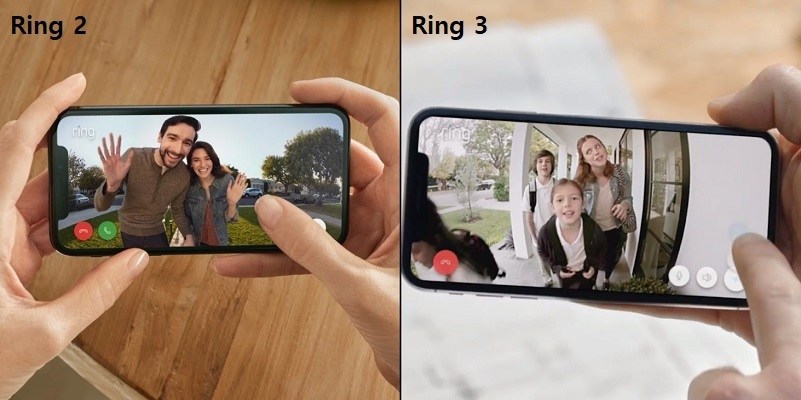
The Ring 2 and Ring 3 both record in 1080p HD. The recording resolution also extends to the live view and streaming of the video feed as well as recordings saved in the cloud. The night vision (more details further below) is also recorded in 1080p, though the actual recorded footage may be lower than full HD.
When motion is detected by the doorbells the recordings are started and all set up alerts are sent. Once you receive an alert, you can use the apps to view the feed, or use the two-way communications.
If you want to view the live feed and save your recordings, you will need a Ring protect plan. There are three to choose from, including the free version, though limited in its abilities.
The Ring Protect Plans
Ring has a 1 year warranty on all their products, along with the storage and recording saving applications. You will also receive a free trial subscription to the paid plans which will either expire at the end of the trial or you can keep the account active by continuing to pay. The free version stays for life, but you can upgrade at any time, for any length of time.
To see what the three Ring Protect plans offer you, the chart below compares the plans for you.
| Free | Basic | Plus | |
| Motion Notifications | Yes | Yes | Yes |
| Live View | Yes | Yes | Yes |
| 2-Way Communications | Yes | Yes | Yes |
| Lifetime Theft Protection | Yes | Yes | Yes |
| 60-day Video History | No | Yes | Yes |
| Video Save/Share | No | Yes | Yes |
| Snapshot Capture | No | Yes | Yes |
| 24/7 Professional Ring Monitoring | No | No | Yes |
| Extended Warranty | No | No | Yes |
| 10% off future Ring.com purchases | No | No | Yes |
| Price | Free | $3/mo Each Device | $10/mo All Devices |
Controlling the Ring Video Doorbells
When it comes to your new Ring doorbell, there is a lot more than just knowing someone is at your door. The video aspect of these doorbells need guidance and control and you can accomplish with the various control options.
Mobile App Controls
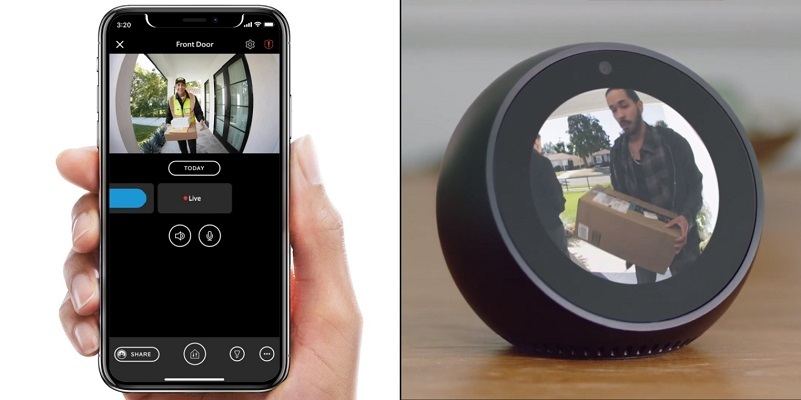
The Ring app is required for the initial set and communications of the doorbells. Once the doorbell is set up, you don’t technically need the mobile app anymore. However, your options and controls are severely limited.
The mobile app will allow you the ability to view the video feed, talk and hear the person at your door, and access the recordings in the cloud storage. Through the app, you can also use the Ring Neighborhoods. Neighborhoods is a Beta program that allows you to take snapshots from the videos and send them to your neighbors and upload them to a neighborhood watch focused social media app.
Alexa Integration
As the Ring line is made by Amazon, there is built-in Alexa support in all their devices, including the Ring 2 and Ring 3. With an Alexa device with video, such as the Echo Show or FireTV, you can have your live feed displayed with just your voice.
The Alexa integration you can show or hide the live feed and stop the live feed. For other Ring devices there are other commands you can use, but for the video doorbells you can view or stop the live feeds only.
Bottom Line: The controls for the two devices are the same, so this is a tie. The mobile app will be your most used form of control for both devices.
Is Night Vision Acceptable?
The night vision for both models records in full HD as well as color. The original Ring doorbell only recorded in black and white when in night vision mode. The Ring 2 and Ring 3 both record in full color.
However, what you will find is that the full color is only available when there is enough ambient light to keep the infrared LEDs in color mode. This light can come from a porch light, a street light or any other source of light the camera on the doorbell can pick up.
If there isn’t enough light then video will show and record in black and white. Either in full color or in black and white, the recordings don’t degrade and you can still have a clear image, it just may not be in color.
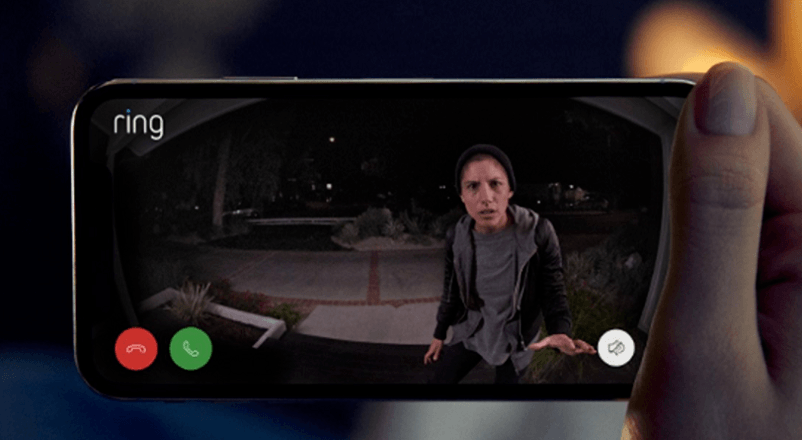
Bottom Line: The 1080p HD resolution in night vision is powered by infrared LEDs that will record in full color in both models, resulting in a tie for this comparison round.
Ring Video Doorbell 2 & 3 Additional Features of Note
You may be interested in the smaller functionalities that the two doorbells offer you. While both models have two-way communications and motion zones, only the Ring 3 has new, advanced motion detection.
Two-Way Communications
Each Ring video doorbell will come with a built-in microphone that allows you to hear what the person at the doorbell is saying. Along with the built-in speaker, you will also be able to respond in kind. Using your phone or tablet, you can see, hear and talk to whomever is at your front door, no matter where in the world you are located.
Ring 3 Advanced Motion Zones
Both the Ring 2 and Ring 3 have motion zones for detection and sending alerts. With these zones you can take some control over what initiates an alert and what doesn’t. The ring 2 will allow you to block zones you create on the mobile app to help minimize false alerts.
The Ring 3 takes things a step further by also allowing you to use what Ring calls advanced motion zones. These advancements give you the power to zoom in or out between 5 and 15 feet from the camera field of view. Anything inside the resulting zone will trigger an alert, while motion outside this area will be ignored.
The advanced zoning drastically cuts down on the number of false alerts and recordings, saving you frustration, bandwidth and battery life.
Bottom Line: The Ring 3 takes the advantage here. With better motion detection rules and the same two-way communications as the Ring 2, it is a step ahead.
Ring 3 Plus Honorable Mention
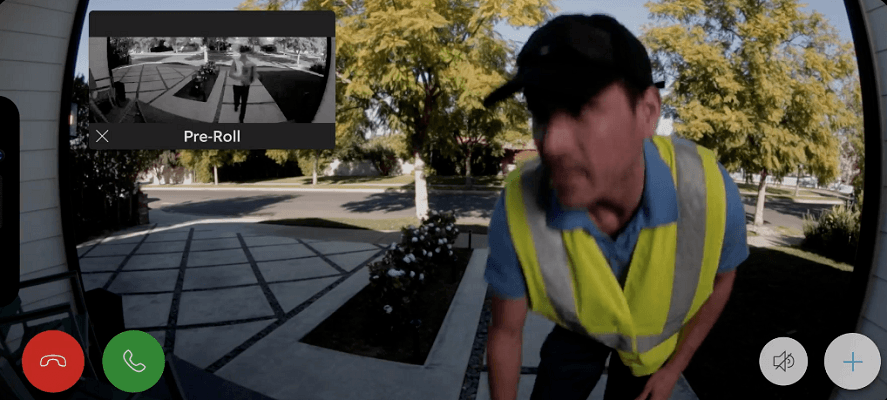
Debuting at the same time as the Ring 3 is the Ring 3 Plus. This model is identical to the Ring 3 with one exception. A technology known as Pre-Roll allows you to see the recording up to 4 seconds before the alert took place.
For example a delivery person leaving a package at your door may trigger the alert, but by the time the alert is received and viewed, they may be gone, leaving you to wonder who was at your door. With Pre-Roll, you can see the 4 seconds before the alert and find out.
While the technology isn’t a new feature, this is the first time it is available in a battery powered video doorbell. You can read more about this feature and see the full comparison review between the Ring 3 and Ring 3 Plus we wrote up for you here.
Frequently Asked Questions
Now we will answer some of the questions people also ask about the Ring 2 and Ring 3 video doorbells. If you have further questions you would like to ask, please feel free to use the comment section below.
Q. How do I contact Ring for support or a warranty claim?
A. According to the Ring warranty page, to make a warranty claim you can email help@ring.com or call 1(800) 656-1918 (US) or 1(310) 929-7085 (International). Ring states “For warranty requests: Please be prepared to describe the product that needs service, the nature of the problem and to provide proof of purchase. You will also be required to return your existing device in accordance with directions that will be provided by Ring.”
Q. Do the doorbells give the user feedback?
A. Yes. Both the Ring 2 and Ring 3 will chime outside for the one pressing the button, just like a normal doorbell. However, unless you have the Ring Chime or Ring Chime Pro, there won’t be an audible chime inside the home. You also have the option of connecting either doorbell to your existing chime through the hard-wiring option.
A. As long as you are subscribed to one of the paid Ring Protect Plans you will be able to save, download or share any photo or recording at any time. The share from the cloud option is available through the Ring Neighborhoods application as well.
Q. Are there preset motion zones?
A. Yes, both the Ring 2 and Ring 3 offer preset and customized motion zones, The preset zones are common shapes and sizes that you can select. You also have the ability to create your own shapes and definitions if needed.
Q. My router is located in the back of my house, will I be able to use the Ring 2 or Ring 3?
A. Both models have a decent wireless range, however this isn’t always good enough. There is a simple solution, though, called the Ring Chime Pro. It is an indoor chime, but unlike the Ring Chime, the Chime Pro includes a WiFi extender to help keep your signal strong throughout the home to the router location.
What I Like About the Ring 2
- Simple installation that takes less than 15 minutes.
- Dual power options to fit your specific needs.
- Low maintenance doorbell for people short on time.
What I Like About the Ring 3
- Advanced motion zones give you more controls over false alerts.
- Works well with the Ring Neighborhoods app.
- Simple and user-friendly set up.
Conclusion
The Ring 2 isn’t overpowered or overshadowed by the Ring 3. Which makes knowing which model to go for a more difficult choice. It comes down to your current set up and what you expect from the video doorbell you do choose.
If you have an existing Ring 2, the Ring 3 isn’t really worth an upgrade. Unless you must have the advanced motion zones, there aren’t enough other differences to make the purchase for an upgrade worth it.
However, if you don’t have an existing video doorbell, the Ring 3 makes the better choice. It does have enough advancements to make an initial purchase more rewarding and is the overall better doorbell in this comparison.
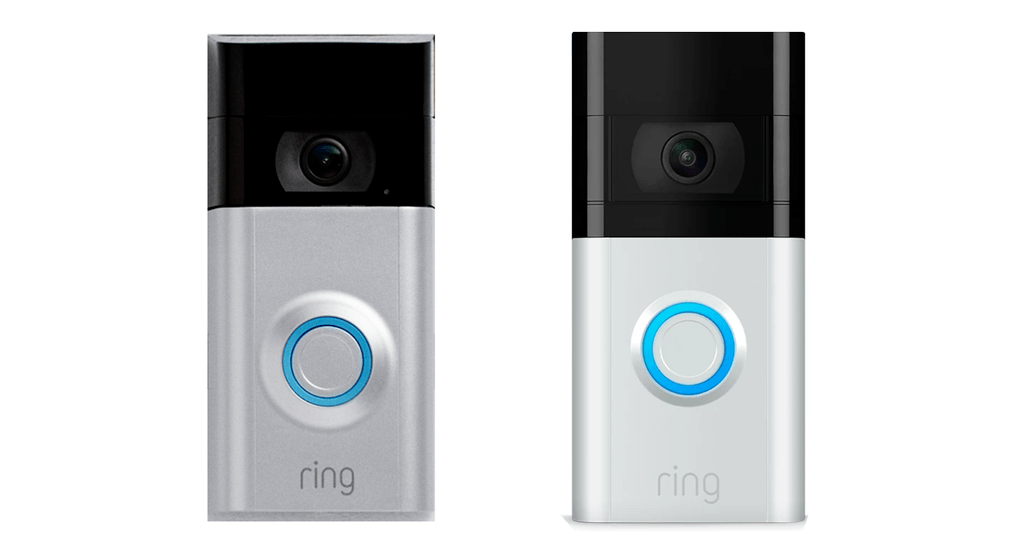
Extremely usable information!!!! Well Done